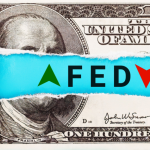:max_bytes(150000):strip_icc():format(jpeg)/GettyImages-1847835273-0ece3775c813473896791f7902b5d184.jpg)
ANGELA WEISS / Contributor / Getty Images
Reviewed by Thomas BrockFact checked by David RubinReviewed by Thomas BrockFact checked by David Rubin
Exchange-traded funds track or seek to outperform a particular index, sector, commodity, or other asset. ETFs offer broad exposure to the market and allow investors to achieve objectives within their portfolios. This can include hedging options for investors concerned about economic or market cycle volatility. Here are four hedging strategies that utilize index-based ETFs.
Key Takeaways
- ETFs provide investors with viable hedging options to protect against potential losses and generate income.
- Hedging strategies with ETFs allow investors to keep their portfolios intact, which may reduce tax consequences and trading costs.
- Hedging strategies are best used for short-term and tactical purposes, particularly those employing inverse and leveraged ETFs.
Hedging With Inverse ETFs
Investors long in index-based funds or stock holdings and worried about short-term risk can take a position in an inverse ETF, which appreciates when its tracking index falls in value. A long position in the Invesco QQQ (QQQ), which tracks the NASDAQ 100 Index, could be hedged with an offsetting position in the ProShares Short QQQ (PSQ). Any losses of Invesco QQQ are neutralized through gains of ProShares Short QQQ.
Investors can also hedge stock portfolios with inverse index funds of similar holdings. A portfolio assembled to track the S&P 500 Index could be hedged with the ProShares Short S&P 500 ETF (SH), which aims to appreciate by the same percentage as the declines on the index.
Hedging With Leveraged Funds
With leveraged inverse funds, the intrinsic volatility results in a lower capital requirement to offset declines. A fund offering triple leverage, such as the ProShares UltraPro Short QQQ (SQQQ), requires capital to fully offset changes in an index, approximately one-third of the long position.
For example, a 3% decline in a $10,000 position in the Invesco QQQ is a loss of $300. In a triple-leveraged inverse fund, the percentage loss on the index is multiplied by three for a gain of 9%. A gain of 9% on a $3,300 position is $297, offsetting 99% of the loss. Due to the reset of leverage daily, the performance of these funds is generally more predictable when they are used as short-term trading vehicles.
Writing ETF Options
Investors also have the option of hedging with leveraged inverse funds. Adding leverage to an inverse fund multiplies the percentage changes on the index tracked, making these ETFs more volatile but allowing for smaller allocations of capital to hedge positions. The capital required to fully hedge long exposure with a non-leveraged fund equals the amount invested in the long position.
Investors expecting markets to move sideways can sell options against their positions to generate income. Referred to as covered call writing, this strategy can be implemented using a wide range of index-based ETFs, including the Invesco QQQ, the SPDR S&P 500 ETF Trust (SPY), and iShares Russell Mid-Cap ETF (IWR).
In a sideways-to-down market, investors can write calls against an ETF, collect the premiums, and then write calls again after expiration if the shares are not called away. The primary risk is that option sellers forego any appreciation above the strike price on the underlying shares, having agreed in the contract to sell shares at that level.
Important
The U.S. Securities and Exchange Commission (SEC) approved the first eleven spot bitcoin ETFs in the United States on Jan. 10, 2024. Bitcoin futures ETFs have been trading since 2021. On May 23, 2024, the SEC signaled acceptance of spot ether ETFs by accepting the applications of the NYSE, Nasdaq, and CBOE to list ether ETFs on their exchanges.
Buying Puts on ETFs
Investors seeking to hedge against price declines on their index-based ETFs can buy put options on their positions to offset some or all losses on long positions, depending on the number of options purchased.
An owner of 1,000 shares of an ETF trading at $80 might buy 10 put options with a strike price of $77.50, priced at $1.00, for a total cost of $1,000. At the expiration of the option, if the price of the ETF drops to $70, the loss on the position is $10,000.
The 10 puts, however, have an intrinsic value of $7.50, or $7,500 for the position. Subtracting the $1,000 cost of buying the put options, the net gain is $6,500, which reduces the loss on the combined positions to $3,500. Buying 16 put options with an ending intrinsic value of $6.50 results in a net profit of $10,400, completely covering the loss on the ETF.
How Can Investors Use ETFs to Hedge Exchange Rates?
Before ETFs, large entities used currency forward contracts, options, or futures to hedge a non-U.S. investment. Individual investors can attempt to hedge the exchange rate risk of long non-U.S. investments by purchasing corresponding amounts of currency ETFs that take a short dollar position, such as the Invesco DB US Dollar Index Bearish (UDN). An investor outside the United States might choose Invesco DB US Dollar Index Bullish (UUP) to take a long U.S. dollar position to hedge portfolios from exchange rate risks.
What Is Inflation Hedging When Investing in ETFs?
Inflation can swing up or down during normal or abnormal economic cycles. Inflation hedging with ETFs hedges against an unknown and unpredictable force. Many investors seek out commodities ETFs as a form of hedging against higher inflation based on the theory that if inflation rises or is expected to rise, so will the price of commodities. While inflation is rising, other asset classes like stocks may not rise, and investors can participate in the growth of commodities investments.
What Are Commodity ETFs?
Commodities include grains, gold, beef, oil, and natural gas. Many ETFs give investors access to precious metals, natural resources, and other commodities. Examples include the U.S. Oil Fund (USO) and the SPDR Gold Trust (GLD). There are also broad commodity ETFs like Invesco DB Commodity Tracking (DBC).
The Bottom Line
ETFs allow investors to take positions with little or no entrance fees or commissions. Since shares trade like stocks, the process of buying and selling is a straightforward process for most individual investors. ETFs cover many markets, including stocks, bonds, and commodities.
Read the original article on Investopedia.



